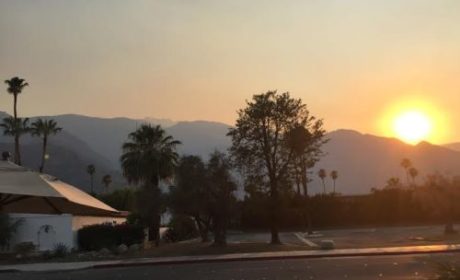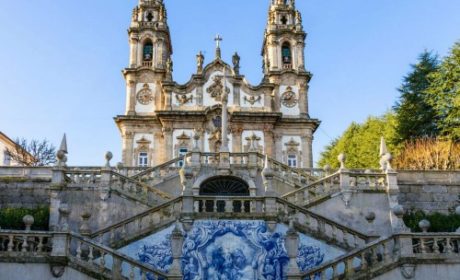It’s safe to say that Italy has been blessed with more than its fair share of greatness. Exploring Italy really makes you realize how plentiful the country is in terms of culture, art, landscape, history, and, of course, culinary excellence. And if that’s not enough, they even make something like marble mines incredibly interesting to visit. Today’s guest contributor, Debi Lander from ByLanderSea, is here to tell us all about touring the amazing Carrara Marble Mines.

I grip the sides of the backseat in a Jeep 4×4 as my body slides and squishes into fellow passengers. Chalk dust flying from our tracks, we bounce over potholes and transfer our weight as the vehicle scurries around hairpin corners. This ride takes me up one of the craziest roads I’ve ever experienced. Just when I think we can go no higher, the driver maneuvers around still another tight bend and we ascend again. We don’t stop until we reach Quarry n. 83 Canalgrande Alto, at an altitude of almost 1,000 meters (3,280 feet) above the sea level.
I’m wearing sunglasses as blindingly white stone that looks like snow surrounds me. I peer at the craggy landscape that glistens otherworldly like it’s out of a James Bond movie. It leaves me a bit shaken and stirred. In fact, 007’s Quantum Solace was filmed here in 2008. However, the month is May, and I’m in the Carrara Marble quarries of Italy, the “Marble Mountains,” the same place Michelangelo came to select the purest blocks in the 16th century.
Whether you see Michelangelo’s famous statue of David in Florence or a copy somewhere else, the sublime masterpiece will make you question the method. How did he carve such perfection?
The answer lies in his famous quote, “The sculptor’s hand can only break the spell to free the figures slumbering in the stone.” On the Carrara marble mine tour, I learn that breaking that spell requires dogged work from many men.
Michelangelo was a perfectionist. After searching and finding only the purest white statuario marble, he would hire a crew of quarrymen. They’d hollow narrow trenches, then pound in wedges and force the stone to split. He then gave stonecutters detailed drawings to rough out the block’s length, width, and breadth.
To move the bulky masses over land and sea, the sculptor relied on lots of rope and strong men. With luck, the purchase would eventually arrive at his workshop in Rome or Florence, but even today, transporting marble is a major operation. Massive machines grade the roadways, and others help haul the marble from the quarry and lift it onto flatbed trucks.

When the Jeep landed at the mountain’s summit, I felt like I just jumped off the top of a ski lift. My fellow passengers and I drank in the panoramic view of the Apuan Alps along with the Tuscan coastline and the town of Carrara. As I spun around, I felt humbled surrounded by the sheer size of the white marble facings hewn from centuries of labor. The open-air quarries look like a giant’s staircase to the sky.

The guide explained both the ancient and modern methods of excavation, detailing how the quarrymen today blast and cut, then load the marble blocks onto trucks. The invention of the diamond-encrusted saw significantly increased the speed of extraction. Monster-sized cranes and mammoth machinery aid the lifting. But the work remains dangerous, and two men were killed recently when a block suddenly fell.

My tour group made two other stops in this unusual ecru landscape before descending back to the base. One stop paused beside a behemoth tire, a visual reminder of how small we are compared to the equipment and the struggle against the mountain.

Upon reaching the base, I was given the opportunity to sample a “Quarryman Breakfast” at Il Poggio Restaurant. Mine became more of a lunch as a salad was added to the typical morning meal of the local miners.

My plate contained a few slices of thin salami, cheese, and a piece of real lardo di Colonnata I.G.P., the traditional herbed backfat that is left to age in white marble vats in the village of Colonnata. I tasted the thin slice of lardo (honestly more like a small glob) laid over a piece of toasted bread, accompanied by a glass of red wine. I understand that lardo provides a lot of energy for hard work, but it was much too fatty for my liking.

I meandered over to the Marble Store, a small gift shop where I purchased a bracelet containing marble stones between links. I then took a self-tour through the Mining Museum filled with displays and information about historical mining techniques. I saw aged tools, sleds and metal cables used for sliding blocks down the pathways and the small hut of a former quarryman.

I also came upon a high-tech instrument with robotic arms carving a marble copy of the David. I was mesmerized, but somehow this just didn’t feel right! To computerize a method to recreate the famous artwork seemed like cheating, but then, the Mona Lisa and other works have been copied many times.

After leaving the quarry, I was transported to the old town of Carrara where I was given about an hour to explore on my own. I went into the city’s cathedral, naturally made of marble, but lacking the beauty of churches in wealthier towns like Siena, Pisa, and Florence. Marble maintains the local economy; in Carrara, producing and selling marble is the way of life.

For anyone interested in adventure or the art of marble cutting, a visit to the Carrara Mable Mines becomes a fantastic and unusual outing and is highly recommended. If you drive to the quarry, the cost is just 10 euro per person. My tour included pick up and return to the train station plus the tour, meal and free time in town for 45 euros. Carrara is about an hour’s drive from Pisa or likewise, in the opposite direction, to Cinque Terre.
Have you been to the Carrara Marble Mines? Come join the conversation at the My Itchy Travel Feet page on Facebook. Or send us an email with your thoughts.







